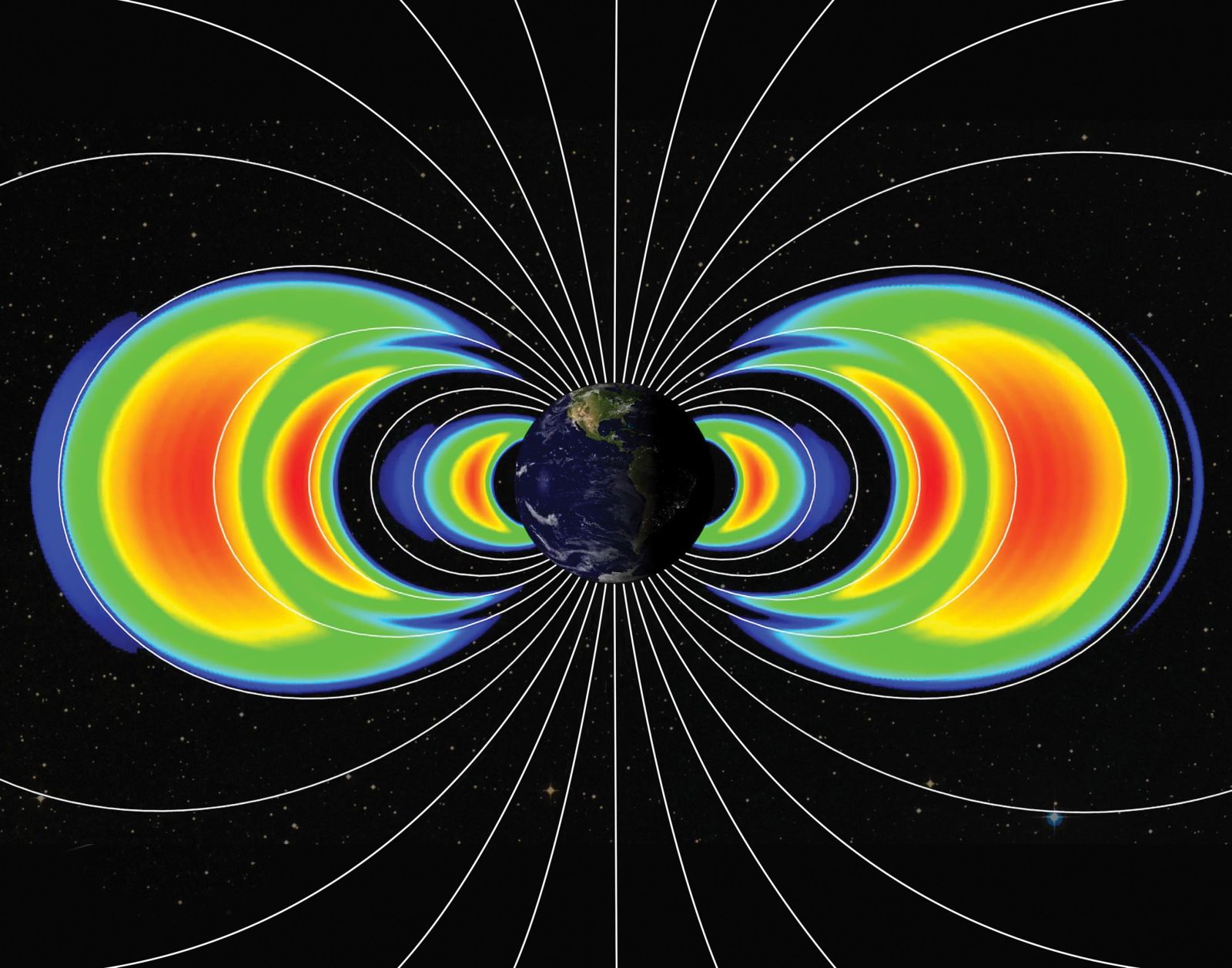A solar storm created impressive radiation belts around Earth 🌍
Published by Adrien,
Source: Journal of Geophysical Research: Space Physics
Other Languages: FR, DE, ES, PT
Source: Journal of Geophysical Research: Space Physics
Other Languages: FR, DE, ES, PT
Follow us on Google News (click on ☆)
This solar storm not only disrupted GPS communications but also created two new temporary radiation belts around Earth. These belts, located between the two permanent Van Allen belts, surprised scientists with their composition and lifespan.

The May 2024 solar storm created two additional radiation belts, sandwiched between the two permanent Van Allen belts. One of them, shown in purple, contained a population of protons, giving it a unique composition never observed before.
Credit: NASA's Goddard Space Flight Center/Johns Hopkins University, Applied Physics Laboratory.
The discovery was made possible thanks to the CIRBE satellite, a NASA CubeSat that "miraculously" came back to life after a malfunction. This event allowed the capture of unique data on these new radiation belts, including the unprecedented presence of protons in one of them.
The Van Allen belts, composed of energetic particles trapped by Earth's magnetic field, are a critical consideration for spaceflight safety. The formation of these new temporary belts, especially the one containing protons, represents a significant advance in our understanding of the interactions between the Sun and Earth.
The exceptional lifespan of these belts, particularly the one containing protons, intrigued researchers. Unlike previous temporary belts, which disappeared within weeks, these new structures persisted for several months, providing a unique observation window.
The role of the CIRBE CubeSat in this discovery is remarkable. Despite an initial malfunction, it resumed operations just in time to record the effects of the solar storm, delivering valuable data on the dynamics of radiation belts.
This discovery highlights the importance of space missions, even the most modest ones, in exploring and understanding our space environment. It opens new perspectives for predicting the effects of solar storms on terrestrial and space technologies.
What is a radiation belt?
Radiation belts, also known as Van Allen belts, are regions of space around Earth where charged particles, such as electrons and protons, are trapped by Earth's magnetic field. These particles, primarily originating from the solar wind, are accelerated to speeds close to that of light.
These belts play a crucial role in protecting Earth from solar and cosmic radiation. However, they also pose a danger to satellites and astronauts due to the high levels of radiation they contain.
The discovery of new temporary radiation belts, like those observed after the May 2024 solar storm, offers a unique opportunity to study the dynamics of these structures and their impact on the space environment.
Understanding how these belts form and evolve is essential for improving the safety of space missions and protecting terrestrial technologies from the effects of solar storms.
How do solar storms affect Earth?
Solar storms are massive eruptions of charged particles and electromagnetic radiation from the Sun. When they reach Earth, they can interact with Earth's magnetic field, causing auroras but also disrupting radio communications and GPS systems.
These storms can also increase the density of radiation belts around Earth, as observed after the May 2024 solar storm. This increase can pose additional risks to satellites and astronauts due to heightened radiation exposure.
Studying the effects of solar storms on the space environment is crucial for developing protection strategies for space and terrestrial technologies. Data collected during these events helps scientists better understand the mechanisms at play and predict future impacts.
The May 2024 solar storm, with the formation of new radiation belts, provided valuable insights into how such extreme events can alter the space environment around Earth.